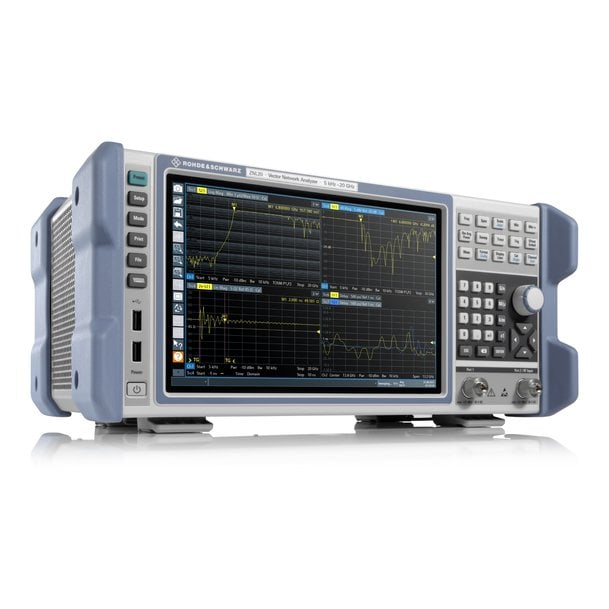www.industry-asia-pacific.com
05
'21
Written on Modified on
Rohde & Schwarz updates economy VNA portfolio with models up to 20 GHz and independant CW sources for low frequency models
Rohde & Schwarz launched four new R&S ZNL and R&S ZNLE vector network analyzers that can support up to 20 GHz of operation frequency.

The economy VNAs now have the frequency range necessary to investigate even third harmonics for 5 GHz and 6 GHz band technologies, such as wireless LAN or mobile radio. The latest firmware release also includes a brand-new option that provides lower frequency R&S ZNL models with an internal CW signal generator.
Four new portable benchtop vector network analyzers are now available from Rohde & Schwarz: The R&S ZNL14, R&S ZNL20, R&S ZNLE14 and R&S ZNLE18. The R&S ZNL models have two-port network analysis for a complete set of component S-parameters from 5 kHz to 14 GHz and 5 kHz to 20 GHz. The R&S ZNLE models have two-port network analysis for a complete set of S-parameters from 100 kHz to 14 GHz and 100 kHz to 18 GHz (20 GHz in overrange).
The Rohde & Schwarz instruments are intended for the education, service lab, production and automated testing markets where a balanced price/performance ratio, a small size factor and ease-of-use are top priorities. Together with the time-domain and distance-to-fault analysis options available in the lower frequency models, the four microwave models are ideal for signal and power integrity applications as well as cable and filter testing.
Most 5G FR1 applications use frequencies between 3 and 5 GHz; while wireless LAN for WiFi-6 (802.11ax) uses the 6 GHz band. Debug trials in the design stage need to include the third harmonic, or frequencies up to 18 and 20 GHz. The Rohde & Schwarz instruments in the R&S ZNL/ZNLE family help meet the increasing demand for network analysis at these microwave frequencies and have an attractive price.
The light weight and small form factor make it easy to move the R&S ZNL/ZNLE between test stations or labs. The R&S ZNL also comes with an optional battery pack for field use. Users just push a button to switch on the instrument and start measuring with their R&S ZNL or R&S ZNLE. No external monitors, notebooks or additional software installations are needed.
The new R&S ZNL is ideal for commercial standards of 5 kHz and upwards and can also perform radiated emission measurements that include scans of up to 18 GHz in the time domain to measure voltage standing wave ratios. The R&S ZNL14 and R&S ZNLE14 cover all frequencies in the X band for commercial ground-based and airborne weather monitoring, air traffic control, military satellite transmissions, positioning and target identification.
The R&S ZNL20 and R&S ZNLE18 also support applications measuring in the lower K band (Ku), such as satellite point-to-point communications for GNSS systems, television satellite broadcasts and backhaul links.
Lower frequency models with independent CW source
The R&S ZNL-K14 option is included in the new 1.41 firmware release, expanding the R&S ZNL3, R&S ZNL4 and R&S ZNL6 functions with an internal CW signal generator for DUT stimulation using a continuous wave signal from port 1, while the frequency spectrum is analyzed at port 2. The R&S ZNLx‑B1 spectrum analysis option is required for this function.
The R&S ZNL and R&S ZNLE vector network analyzers are part of the R&S Essentials portfolio. The new microwave models are now available from Rohde & Schwarz and selected distribution partners.
For more information on the R&S ZNL and R&S ZNLE, visit https://www.rohde-schwarz.com/product/znl and https://www.rohde-schwarz.com/product/znle

